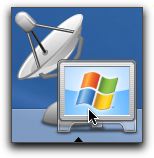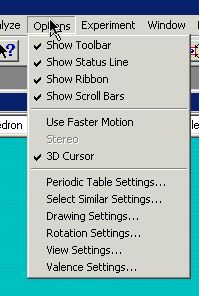Technique 9: Medchem Homology Modelling.
- Medicinal Chemistry Homology Modelling
- Detailed Program System Instructions
1. Overview and Objectives of Experiment:
This experiment involves the following sets of techniques;
- Acquiring a PDB file from a remote
database (use the PDB database linked to the
CIT second year course to acquire the specific file 1G2o.pdb, a Purine
Nucleoside Phosphorylase), transferring it to the appropriate
workspace area (Mac-PC or your Home directory drive), opening it with
the CAChe Biomedchem workspace system and "cleaning" the coordinate
file in preparation for the next stage. This involves inspecting and
correcting hetero groups, adding appropriate hydrogen atoms, correcting
bond types and balancing the charges on the protein residues. At the
end of this part you should finish by optimising the "cleaned" protein
structure using MM3 Molecular Mechanics by selecting Experiment|New
(this might take about an hour). Record your final MM3 energy and
molecular formula in your lab report. Repeat the optimisation for JUST
the ligand structure, just the protein WITHOUT the ligand and then
calculate the binding energy for the ligand into the protein. Report
this also in your lab report.
- In the second part, you will proceed
to view and make various measurements for the protein "cleaned" in the
first part. In particular, you will view the protein's accessible
surface, view and analyse the protein sequence, locate the active site,
show and measure hydrogen bonds between the ligand and the protein
(record the values in your lab notebook) and display the surface of the
binding pocket and look at the docking interactions. (Note: Where the
instructions talk about grouping atoms, create groups for both the IMH
and selected neighbours and just the IMH on its own). List in your lab
report all the nearest residues which contribute to the active site,
including values for the H-bonds lengths.
- In the third part, you will dock a
potential analogue ("lead compound") into the active site and explore
its interactions with the active site (hydrogen bonds and steric
"bumps"), concluding with a re-minimisation of the new analogue. Record
this energy and formula in your report.
You should follow all the steps
outlined in the detailed instructions, recording key numerical data
(Molecular mechanics energies, key residue values for active sites and
homologues etc). Where appropriate a "screen dump" should be taken of
key points in the experiment and saved to disk. Use
e.g. ScreenDump Pro, invoking a capture via the F8 key. Be prepared to have
these files available for the experiment viva. You do NOT need to write up a
formal report for this experiment.
Apart from illustrating the process of homolgy model, and
ligand/protein docking and homology modelling, this experiment also
shows how a complex modern program, with multiple windows and
processes, must be mastered for success. You will be using the Computer known as "thallium"
for this experiment. This has two screens, one for normal document processing (i.e.
viewing the instructions) and one which operates in autostereographic mode
which enables you to view the molecules with a true 3D perspective. This feature must be
switched on/off from a button at the front of the display unit. Warning: Your
brain needs to get accustomed to viewing in 3D, since in reality its being "fooled"
by the computer into thinking its 3D. Initially, a small proportion of people may feel
dizzy during this early period. If you continue to feel dizzy, then simply turn the 3D
effect off.
2. Program Instructions
Copyright (c) H. S. Rzepa and ICSTM Chemistry Department, 2005 and
Fujitsu/CAChe.

